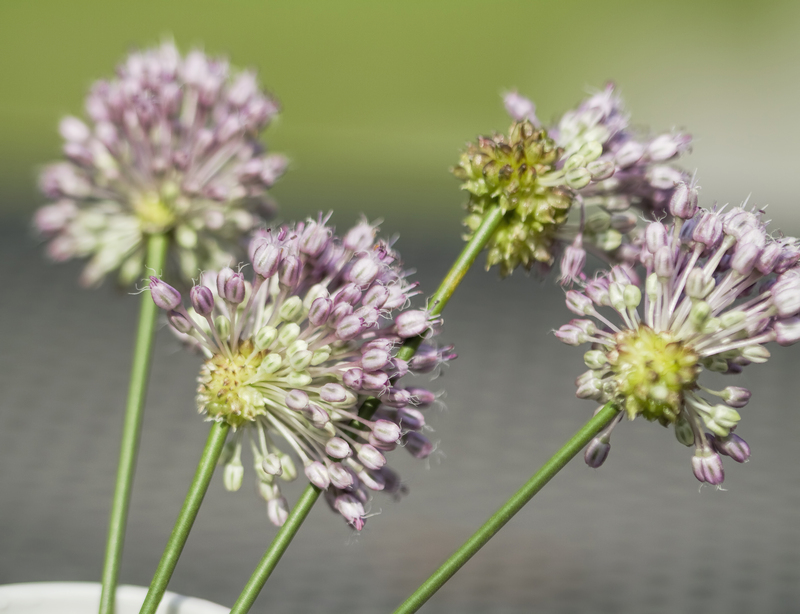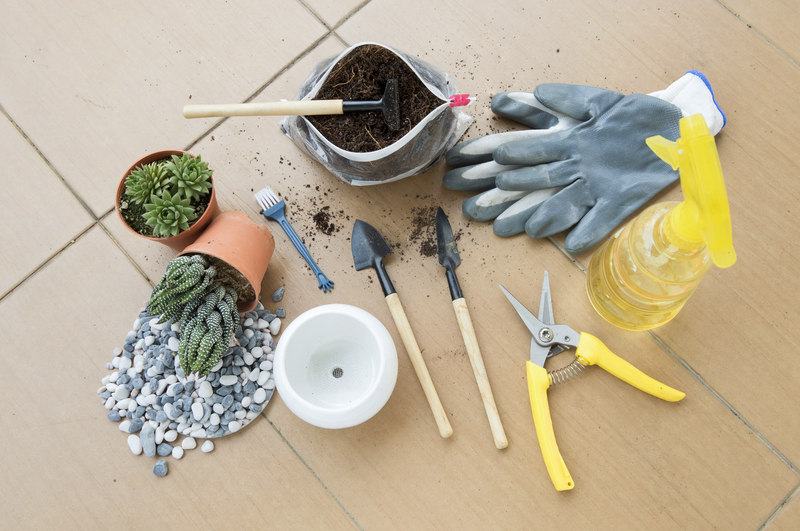How to Keep Your Garden and Dog Happy Together
Posted on 26/06/2025
How to Keep Your Garden and Dog Happy Together: The Ultimate Guide
Are you an enthusiastic gardener and a devoted dog owner? Balancing a thriving garden with a playful canine may feel challenging, but it's definitely achievable! In this comprehensive guide, you'll discover actionable tips and expert advice to ensure your garden stays beautiful and your dog stays healthy and happy. Read on to learn how to keep your garden and dog happy together.
Why Dogs and Gardens Don't Always Mix
Dogs naturally love to sniff, dig, and explore. Unfortunately, these behaviors sometimes lead to trampled flower beds, uprooted plants, and yellow spots on the lawn. Meanwhile, some common garden plants and chemicals can pose hazards to your furry companion. By understanding the unique challenges, you can make choices to create a pet-friendly environment that allows both your plants and pup to flourish.

Designing a Pet-Friendly Garden
Assess Your Current Garden Layout
- Observe Your Dog's Behavior: Take note of your dog's favorite trails around the yard. Do they love a particular sunny patch? Is there a corner where they tend to dig?
- Evaluate High-Traffic Paths: Identify the routes your dog likes and consider making these official paths using mulch or stepping stones.
- Hazardous Areas: Watch for areas with sharp tools, prickly plants, or toxic chemicals.
Fencing and Boundaries
A well-placed fence not only keeps your dog safe but also protects delicate plants. Choose solid, chew-resistant materials and ensure the fence is tall enough for your dog's breed and not easily climbable.
- Secure the Perimeter: Regularly check for gaps or weak spots that determined diggers or jumpers might exploit.
- Dog Runs: Consider a designated dog run with shade, water, and soft landing spaces where your dog can burn off energy without damaging your plants.
Choose Dog-Friendly Plants
Not all plants are safe for dogs, but many beautiful options are both non-toxic and sturdy enough to withstand canine curiosity. Here are some tips for choosing pet-safe plants for gardens:
- Opt for Non-Toxic Varieties: Plants such as sunflowers, marigolds, snapdragons, roses, and basil are safe for dogs and add vibrant color.
- Avoid Toxic Plants: Steer clear of azaleas, lilies, foxgloves, daffodils, and oleander--these are poisonous to dogs if ingested.
- Choose Sturdy Species: Hardy shrubs and groundcovers like boxwood, lavender, or thyme tolerate occasional paw traffic.
- Shade and Shelter: Select fast-growing trees or large shrubs to provide natural shade for your pup during hot weather.
Grass Alternatives That Tolerate Dogs
Dogs and lush green grass don't always mix. Dog-friendly groundcovers like clover, creeping thyme, buffalo grass, or artificial turf are excellent alternatives that stay resilient even with frequent play and "potty breaks."
Training Your Dog for Garden Success
Dog training is just as important as thoughtful garden design. With consistency and patience, you can teach your canine companion to respect your garden boundaries.
Essential Training Techniques
- Set Clear Boundaries: Use low fencing or decorative edging to show which areas are off-limits.
- Positive Reinforcement: Reward your dog whenever they display desirable behavior in the yard, such as sticking to pathways.
- Redirect Undesirable Behaviors: If your dog starts digging, gently guide them away and provide an appropriate alternative, like a sandbox or digging zone.
- Consistency: Train regularly and use the same cues and boundaries every time for lasting success.
Creating a "Dog Zone" in Your Garden
Designate a specific area where your dog can dig, roll, and lounge without causing havoc. Stock it with favorite toys, a water bowl, and perhaps a shady shelter. This proactive step satisfies your dog's instincts and keeps your flower beds safe.
Tackling Lawn and Garden Damage
Dealing With Yellow Spots on Lawn
Dog urine can burn grass, resulting in unsightly yellow patches. Here's how to remedy and prevent the problem:
- Water Immediately: Dilute the urine by hosing down the area right after your dog urinates.
- Consider Special Grass Varieties: Ryegrass and fescue are more tolerant of pet urine.
- Diet Adjustments: Consult with your vet before making dietary changes; some additives claim to reduce urine burning, but results vary.
- Encourage Urination in Designated Spots: Train your dog to use a mulched or graveled potty area.
Dealing with Digging
Digging is a normal dog behavior. If digging becomes destructive:
- Provide a Sandbox: A small "dig pit" filled with sand or soil can satisfy your dog's urge productively.
- Reinforce Boundaries: Place decorative stones, pine cones, or chicken wire beneath mulch in problem areas to discourage digging.
- Physical Enrichment: Boredom is a common cause of digging. Play fetch, go on walks, or offer puzzle toys to keep your dog mentally stimulated.
Safe Pest and Weed Control
Maintaining a healthy, pest-free garden without harming your pet is possible. Here are some practical suggestions for dog-safe garden maintenance:
- Avoid Toxic Chemicals: Many common pesticides, herbicides, and fertilizers are harmful to pets if ingested or even walked through.
- Use Natural Solutions: Diatomaceous earth, neem oil, and vinegar can tackle pests and weeds safely.
- Hand Weeding: Manual weed pulling is the safest method when pets have free access to the area.
- Barrier Protection: Install physical barriers around new plantings or recently treated areas until products have settled or are pet-safe.
Compost and Mulch Hazards
Some types of mulch (like cocoa mulch) and compost piles can be toxic to dogs. Use pet-safe mulches such as pine, cedar, or untreated wood chips, and keep your compost securely enclosed.
Keep Your Dog Entertained in the Yard
An occupied dog is a happy dog. Fill your garden with canine enrichment activities to burn off energy and distract from potential mischief.
- Tunnel Fun: A child's play tunnel or flexible barrier can offer hours of exploration and exercise.
- Agility Obstacles: Set up jumps, ramps, or weave poles to keep your dog physically and mentally engaged.
- Water Play: A splash pool or sprinkler can make summer days cooler and more exciting.
- Treat-Dispensing Toys: Hide treats in safe areas for your dog to find or use interactive feeders for meals outdoors.
Creating a Dog-Proof Design and Style
You don't have to sacrifice curb appeal for canine compatibility. Consider these design strategies for balancing your garden with your dog's needs:
- Raised Beds: Elevate fragile flowers or vegetables out of your dog's reach.
- Robust Edging: Solid stone, brick, or metal edging can deter digging and trampling.
- Garden Art: Decorative boulders, driftwood, or strategically-placed pots can keep dogs from wandering into sensitive areas.
- Pathways: Lay pavers or gravel to guide both human and canine traffic.
Water Features and Ponds
If you have a pond or water feature, ensure it's shallow, securely fenced, or covered. Algae and pond chemicals can be harmful if ingested by curious dogs.
Seasonal Considerations and Maintenance
- Spring: Watch for emerging bulbs and sprouting plants; some, like tulips, can be toxic. Repair winter-damaged fences or paths.
- Summer: Provide plenty of shade and water. Don't leave your dog outside unsupervised in the heat.
- Autumn: Rake leaves regularly and avoid letting your dog eat them, which can cause digestive problems.
- Winter: Ice-melting chemicals and salt are hazardous to pets. Use pet-safe alternatives and wash paws after outdoor adventures.
Common Mistakes to Avoid
- Relying on Chemical Treatments: Always check product labels and opt for pet-safe alternatives wherever possible.
- Overlooking Training: Good fences aren't enough--training your dog is key.
- Allowing Boredom: A bored dog is more likely to dig, chew, or trample.
- Forgetting Water: Always have clean, fresh water accessible, especially in warm weather.
- Ignoring Plant Labels: Research every new plant before adding it to your landscape.

Frequently Asked Questions (FAQ)
1. What are the best dog-friendly plants for my garden?
Hardy, non-toxic favorites include sunflowers, roses, marigolds, thyme, and basil. Always confirm safety using trusted sources or ask your vet.
2. How can I stop my dog from digging in the flower beds?
Provide a designated digging zone, increase playtime, and use barriers. Consistently redirect your dog and reward good behavior.
3. Is mulch safe for dogs?
Yes, if you choose pine, cedar, or untreated wood chips. Never use cocoa mulch--it's toxic to dogs.
4. How do I prevent urine spots on my lawn?
Flush with water, install a potty area, and consider dog-tolerant grass varieties. Diet supplements should only be used under veterinary supervision.
5. What garden chemicals are safe around dogs?
Many organic solutions are safer, but always check ingredient lists and allow products to dry completely before allowing your pet access. When in doubt, opt for manual methods or physical weed barriers.
Conclusion: Achieving Harmony in Your Dog-Friendly Garden
A garden that welcomes both you and your dog is truly a labor of love. With smart choices, consistent training, and a little creative design, your backyard can become a sanctuary for all--lush, vibrant, and safe. Remember to actively supervise your pet, do your research on any new plants or products, and prioritize your pup's needs alongside your green thumb.
By following these tips, your dog and garden can thrive together in perfect harmony. Happy gardening and tail-wagging!



